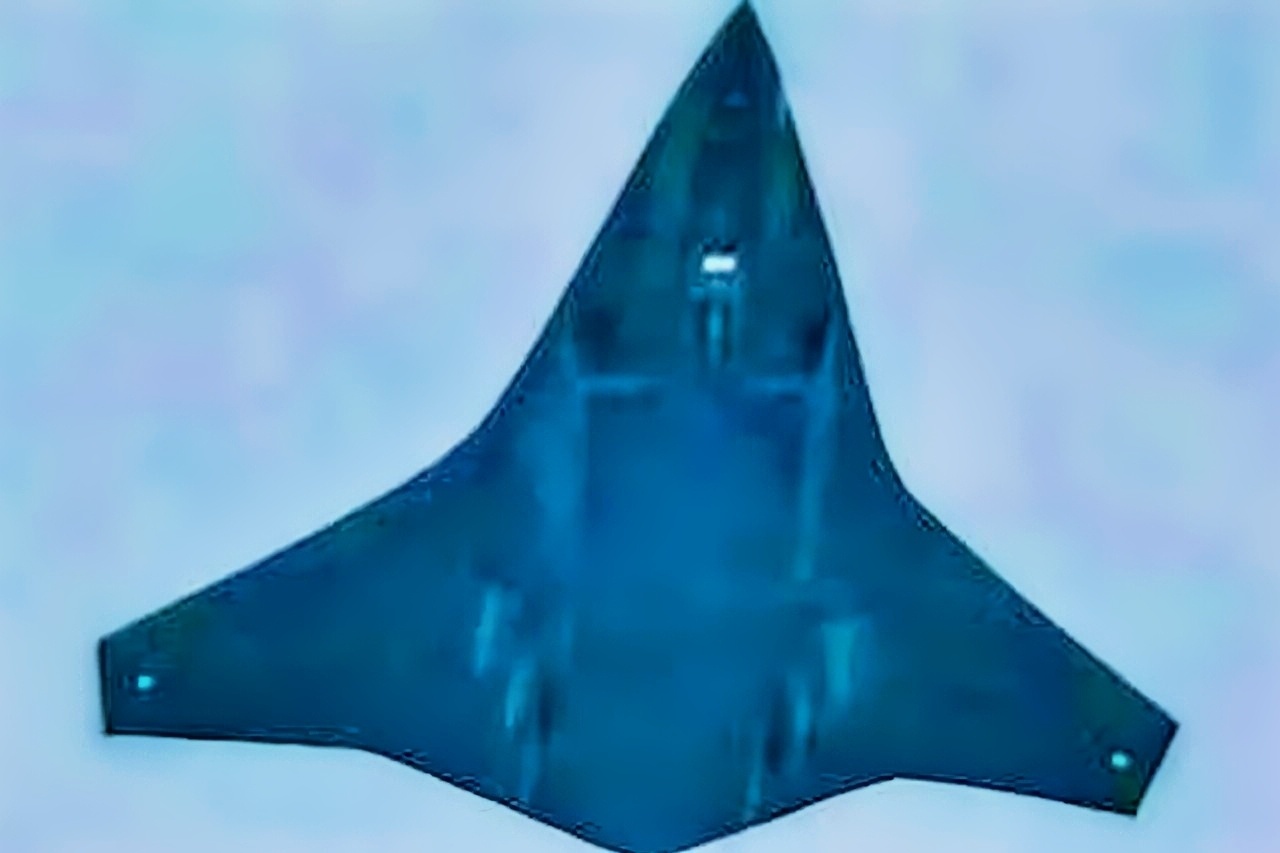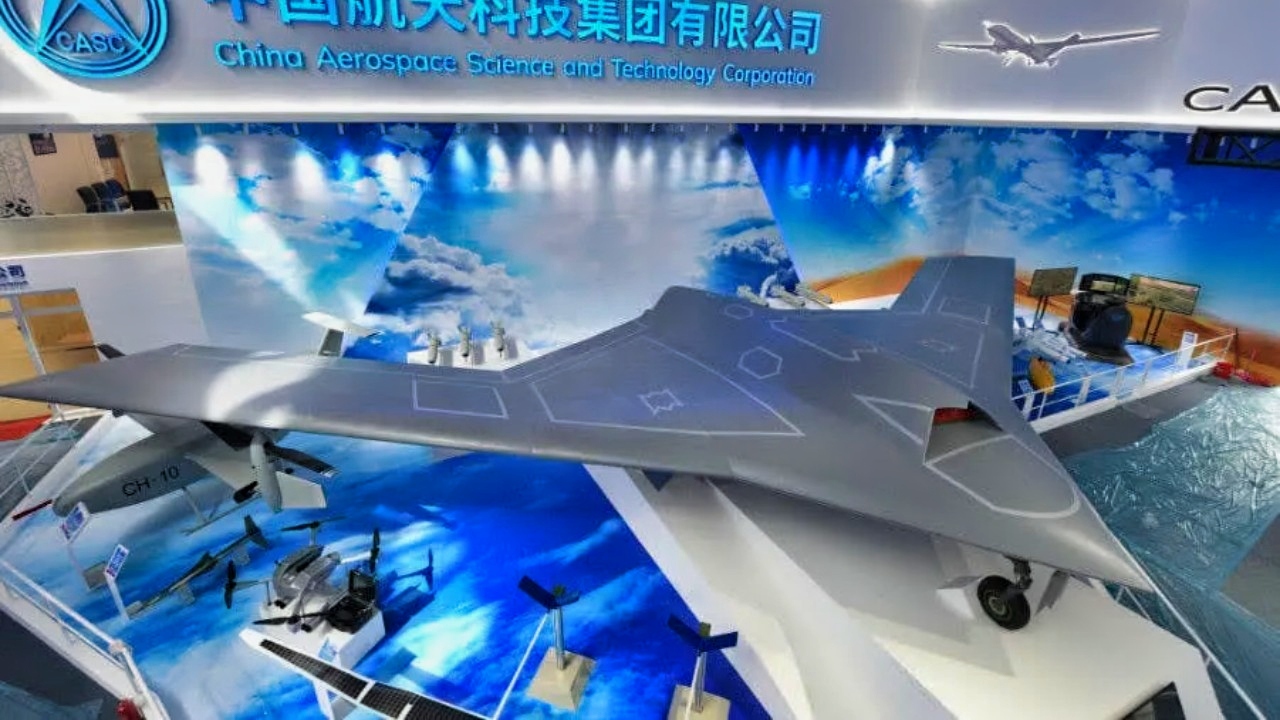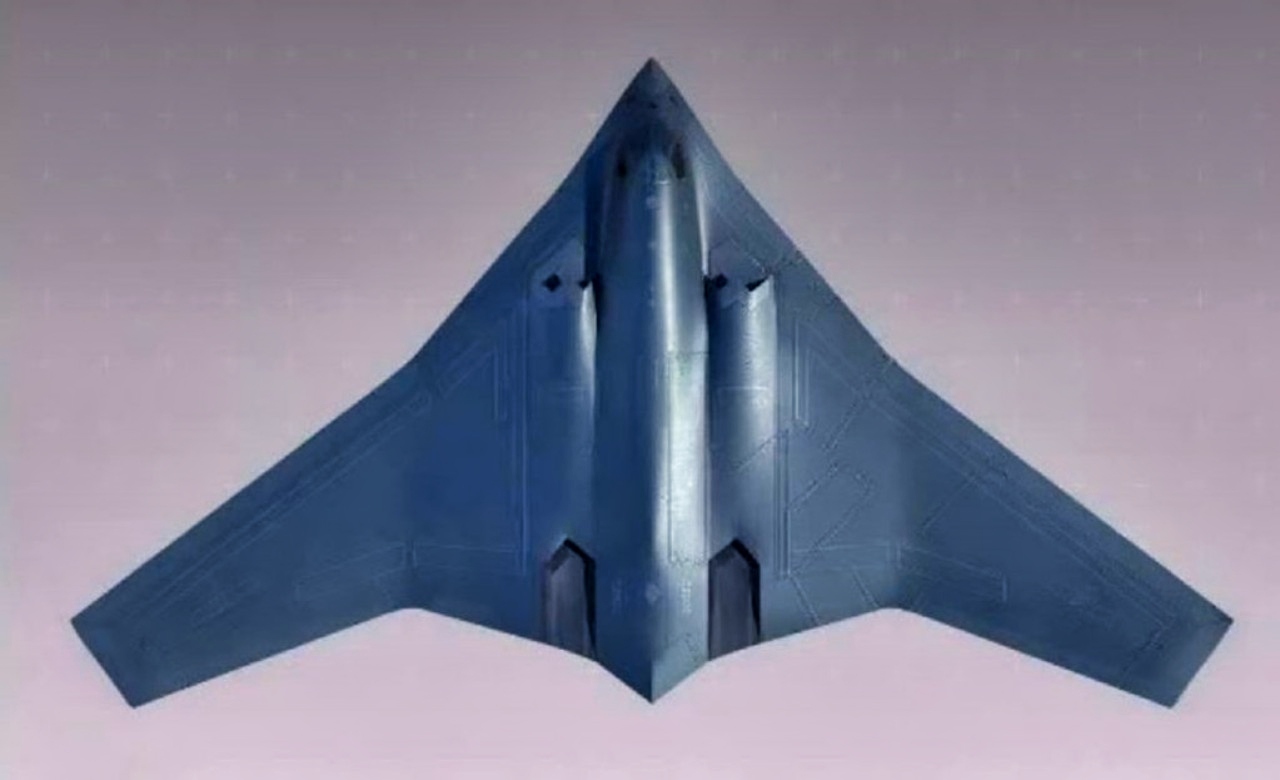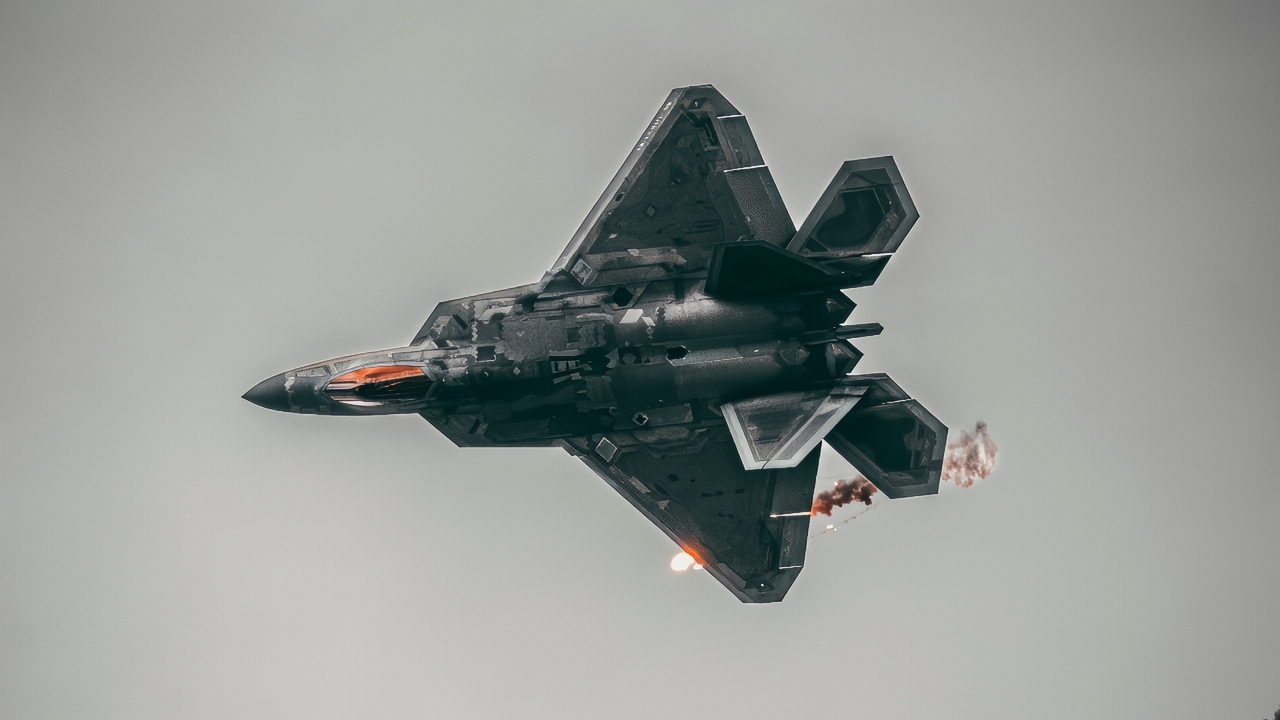China Wants to Make Sure Its Military Can Win Against America
Key Points and Summary
-China’s recent military parade was an unmistakable display of its ambition to achieve both quantitative and qualitative superiority over the United States.
-With a larger navy, a rapidly expanding nuclear arsenal, and advanced hypersonic “carrier-killer” missiles, Beijing is systematically closing the military gap.
-The U.S., despite a larger budget, is hampered by an aging force and eroding readiness.
-The prudent American response is not an arms race but strategic discipline: accelerating targeted innovation in areas like AI and cyber, leveraging alliances, and adopting a strategy of restraint to balance and blunt China’s rise.
China’s Military Is On the Rise
On Sept 3, Beijing hosted one of its biggest military parades in years. Xi Jinping watched from Tiananmen Square as long-range missiles, hypersonic weapons, and unmanned systems rolled past in a choreographed display of force, accompanied by Vladimir Putin and Kim Jong-un.
The message was unmistakable: China is positioning itself to shift the global balance of power in its favor — and has the will and means to field a military that can deliver not just quantitative, but qualitative, superiority over the United States.
That trajectory is no longer a question of talk. It is evident in the size of China’s fleet, the lethality of its missiles, the modernization of its air force, and the exponential growth of its nuclear arsenal.
The challenge those developments pose for Washington is clear. How can the United States blunt Beijing’s geopolitical ambitions and balance its military buildup without starting a war or depleting America’s own finite resources?
The China Military Challenge Is Clear
The clearest example of China’s quest for quantitative superiority can be found at sea.
The People’s Liberation Army Navy (PLAN) now operates more than 370 battle force ships, compared to fewer than 300 for the U.S. Navy.
Most are newly constructed, and output at Chinese shipyards is only growing.

China Stealth Fighter Screenshot from X Platform
The PLAN could have as many as 435 ships by 2030.
In the nuclear realm, Beijing has doubled its warheads since 2019, to over 600 today, and is constructing hundreds of silos. Forecasters project as many as 1,000 operable nuclear weapons by 2030 and up to 1,500 by 2035.
Meanwhile, China has emerged as a true triad: modern ICBMs on land, JL-3 missiles on Jin-class submarines at sea, and H-6N bombers equipped with air-launched nuclear strike capabilities.
China’s aim is unmistakable: overbuild and outnumber the United States in certain force types, while having enough of other types of weapons to be competitive.
What the Numbers Don’t Show
But numbers alone do not tell the whole story. China’s drive for qualitative superiority is equally notable. The PLA has tested hypersonic glide vehicles and, in 2021, reportedly married a fractional orbital bombardment system (FOBS) to a hypersonic re-entry vehicle—an advance U.S. officials described as “deeply concerning.”
China has fielded DF-21D and DF-26 “carrier killer” ballistic missiles, and has conducted test launches of the YJ-21 hypersonic anti-ship missile from a Type-055 cruiser.
Drones, autonomous undersea vehicles, and AI-generated “kill-webs” are being integrated into service operations, ostensibly to speed sensor-to-shooter cycles. At the parade itself, unmanned combat vehicles and robotic platforms were on display, illustrating how automation has already permeated the PLA arsenal.
These advances have been driven by “civil-military fusion”: universities and private firms, particularly in AI, are at the cutting edge of the innovation pipeline. The Chinese bet is that quality, no less than quantity, will bring them the edge.

China J-20 Fighter. Image Credit: PLAAF/Chinese Air Force.
Airpower tells a similar story. The PLA Air Force and Navy Aviation between them operate more than 3,000 aircraft, including roughly 2,400 combat platforms—the largest in the region. Stealthy J-20 fighters, J-16s and J-10Cs, and the new carrier-capable J-35 are now operational. The air leg of the nuclear triad is now anchored by the H-6N, which can carry an air-launched ballistic missile.
Carrier aviation is also growing. Liaoning and Shandong are operational, and the conventionally powered Fujian is undergoing sea trials. Speculation persists over a nuclear-powered follow-on. Here too, the trend is clear: China is steadily narrowing the qualitative gap with the United States.
What About America?
Washington, by contrast, still maintains the advantage in budgetary terms. Congress authorized roughly $895 billion for national defense in FY 2025, nearly four times China’s official figure of about $246 billion.
But budget numbers on paper no longer ensure an automatic margin of advantage. America’s force structure is growing old: the average U.S. Air Force aircraft is more than 30 years old, shipbuilding backlogs are chronic, and maintenance shortfalls are eroding readiness.
The aura of unquestioned overmatch that once defined American power is fading, especially in the Western Pacific, where China’s geography and modernization agenda work to its advantage.
The true grand strategic question for the United States is no longer to sustain hegemony, but to prevent China from translating its growing power into regional primacy.

CH-7 Drone from China. Image Credit: Creative Commons.
What Happens Now?
In the face of all this, prudence is required. Great-power competition need not inspire panic or hysteria in Washington—especially when the U.S. still boasts unmatched global reach, resilient alliances, and vast operational experience.
What is needed is discipline: an acknowledgment that primacy has passed, paired with the will to maintain deterrence without an arms race. The goal should not be to reassert global dominance, but to secure a balance of power that blunts China’s rise while preserving America’s core interests.
China’s military build-up is sure to have clear operational consequences. The U.S. must accelerate the deployment of resilient space architectures, pursue longer-range precision strike, and harden cyber-electronic defenses while shifting toward more dispersed force structures.
The Navy must find ways to address the vulnerability of carrier strike groups to the DF-21D, DF-26, and YJ-21 threat envelope.
The Air Force must do everything possible to maintain its edge in stealth, munitions, and operational lethality. The nuclear enterprise must remain credible, flexible, and survivable in the face of China’s own expansion. Above all, the Pentagon should double down on resilience and distribution, and focus less on costly “exquisite” platforms.
What Not To Do
This also counsels against the urge to match China ship-for-ship or missile-for-missile without careful consideration. America’s advantages lie in other domains, including alliance networks, expeditionary reach, and technological ingenuity in areas where Beijing still lags. Numerical parity would hollow out readiness and modernization.

H-20 Bomber from China Artist Rendition. Creative Commons.
It is far wiser to prioritize investment in AI, quantum, cyber, and counterspace, where funding can reap disproportionate benefits. China is also making gains in these areas, to be sure, but has not yet established dominance. Innovation still matters for the U.S., if pursued with discipline.
China has not yet surpassed the United States, but its aims are clear: to overtake the U.S. on both quantitative and qualitative terms. The U.S. must accept this trajectory, without allowing itself to be frozen by fear.
The prudent course is one of targeted innovation, alliance leverage, and strategic restraint. That—not panic—will preserve credibility and deterrence in the years to come.
Restraint Must Be the North Star
Restraint is not retrenchment. It is realism: an acceptance that America now faces a peer competitor that is both willing and able to amass quantitative heft and qualitative edge. The margin of American superiority will continue to shrink, but power is not measured merely in numbers or novel systems.
It is also found in clarity of purpose and economy of means. As Clausewitz reminded us, the aim of strategy is not the annihilation of an enemy, but the achievement of political objectives.

A U.S. Air Force F-22 Raptor performs a vertical climb during the 2025 Marine Corps Base Hawaii (MCBH) Kaneohe Bay Air Show, at MCBH, Aug. 9, 2025. The Kaneohe Bay Air Show provided an opportunity to showcase the aircraft, equipment, and capabilities of the armed forces in the Indo-Pacific region to the local community. The air show, which contained aerial performances, static displays, demonstrations, and vendors, was designed to celebrate MCBH’s longstanding relationship with the local community. (U.S. Army photo by Pfc. Peter Bannister)
America’s mission is therefore not to chase the illusion of perpetual dominance, but to apply its power with discipline: balancing and blunting China’s rise in ways that preserve stability, conserve resources, and secure the nation’s enduring interests.
About the Author: Dr. Andrew Latham
Andrew Latham is a non-resident fellow at Defense Priorities and a professor of international relations and political theory at Macalester College in Saint Paul, MN. You can follow him on X: @aakatham. He writes a daily column for National Security Journal.
More Military
Confirmed: The U.S. Navy Still Loves the Aircraft Carrier
The F-22 Raptor Fighter Question No One Dares Ask
The Virginia-Class Might Be the Best U.S. Navy Submarine
YF-118G Bird of Prey is the Lost Stealth Fighter
The Ford-Class Aircraft Carrier Has a Message for the U.S. Navy











JingloBell
September 3, 2025 at 2:54 pm
The goal is not to beat america, which is America’s all-time national mantra, but to survive a life-changing struggle with uncle Sam, exactly like what nam did.
But that’s yesterday’s scenario.
Today, does the Chinese leadership understand the scope or extent of America’s current intention.
America today doesn’t just want to beat somebody in a war, but to turn it into a wasteland or hellscape and then later be transformed into a future long-term dependency or colony.
To confront that kind of extreme measure, the chinaman must understand that the use of nukes is absolutely necessary.
In the coming struggle.
As America is already planning for exactly that.
megiddo
September 3, 2025 at 3:02 pm
I dare say, right now, in 2025, or now in the afternoon of Sept 3, Wednesday 2025, that china would be hard put to beat even Israel, never mind the Goliath US.
To beat US, you first need to beat one of its minions or cronies, beat it in a devastating or thorough manner.
But right now, china is hardly able to do that.
Can china, for example, beat the UK to a pulp. Very very unlikely, if not impossible.
Who to blame. Xi jinping.
RequestBeingVerified
September 3, 2025 at 4:01 pm
Okay, parade was A-class, but the real gist is what is now parading or going on in the great mind of donnie trump.
Trump seems to be a man of an unhinged mind, just like Joe Biden, his predecessor.
Trump says US military is most powerful in the world, but in Afghanistan😔, it was unceremoniously kicked out along with its msny other NATO brethren.
The reason for the afghan debacle was the non-use of nukes. Had the US employed nukes, Afghanistan today would be a province of US.
So, the pertinent question tody is, will trump use nukes in the coming taiheiyo senso.
Will camels drink at a waterhole. Will a horse kick at a shadowy figure creeping up behind its hindquarters.
windbourne
September 3, 2025 at 4:55 pm
1) China spends a lot more on military then we do. It is just hidden. This was shown previously.
2) China has massive civilian manufacturing, along with supply lines, behind it which makes it easy for them to test and perfect things.
3) America continues to run up deficit/debt and waste $ horribly. CHIPS act should be focused on rebuilding the supply chain, which can only happen by making large numbers of products. For all intents and purposes, it needs to be civilian products.
Start with INVESTING $5B into start-ups that produce goods using chips, REM, or anything that uses a supply chain that we do not have. REquire them to use American parts OR to go to a government agency. This would have $5B and would focus on either buying in bulk from friendly nations, OR buy from neutral to not-so-friendly, but then spend money to re-start lines here.
Simply spending $ on REM, Chip production, etc does not help us. We need the entire supply chain.
Jim
September 3, 2025 at 6:21 pm
That parade: a fire bell in the night.
The author’s distinction, “Restraint is not retrenchment.” is correct.
What are our objectives in the Western Pacific?
What are our objectives in East Asia?
Those objectives may define the probable tensions between China and the United States in the next twenty years.
It’s important our reach doesn’t exceed our grasp.
It’s deadly serious we understand what our limitations are for controlling events in those two areas of the World.
And, actively take those limits into account, not simply assume we can do it all, we can’t.
securocrat
September 3, 2025 at 10:13 pm
My (secretively secret) worry is that china could face a fordow moment, sometime, in the next few years.
How will china pass that test when the time arrives.
China then just another Iran, Venezuela or Syria. The author needs to delve INTO THIS !!!
1KoolKat
September 4, 2025 at 8:05 am
The SCO, anyone? What many overlook is that China’s display of power is just one subset of the force that could be used against the US. There are also 20 other nations in that totalitarian alliance (SCO) united by one goal: hatred of the current rules-based international order. Those who think a future fight will only be between the US and China are mistaken. Think bigger!